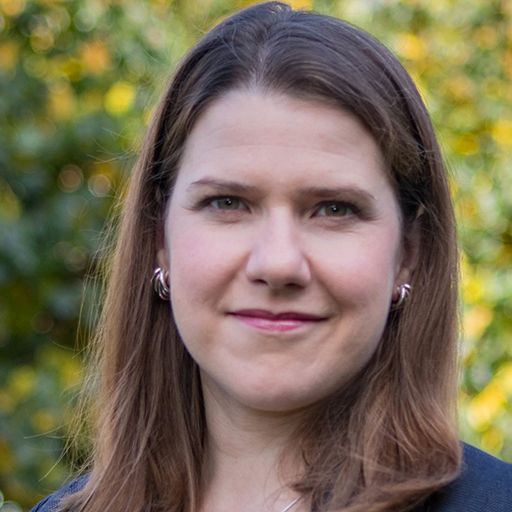
Authors
Ahead of Climate Week NY, Jo Swinson, Director at Partners for a New Economy (P4NE), discusses the tension between traditional growth models and sustainability goals and how businesses can work together to explore new ways of measuring economic success.
Can you introduce yourself, and tell us how your background as a political leader informed your decision to lead Partners for a New Economy?
Since the earliest days of my political career, I have been convinced of the need for alternative measures of economic success. Back in 2006, I explored the flaws of GDP growth as an indicator of quality of life, and in 2009, I co-founded the UK Parliament’s cross-party group on Well-Being Economics. This idea wasn’t new—as far back as 1968, Robert F. Kennedy memorably noted: “It [GDP] measures everything in short, except that which makes life worthwhile.”
Later, I saw that the disconnect between the promise of economic prosperity and the precarity of people’s lives can lead to resentment of the current system. The ensuing backlash has torn at the fabric of our society and undermined faith in our democracy.
In 2020, I was looking for a new challenge. Combining my political experience with my long-standing desire to change economics, leading P4NE was a perfect match. The goal of an economy that serves people and the rest of nature is ambitious, but possible.
Growth is the foundation of our current economic system. How does our economy need to transform for humanity to thrive in the long term?
We’re primed to think of growth as a good thing—it’s deeply embedded in our economics and culture. As a society, we need to support the growth of many things—living standards and food security, health and well-being, the skills and creativity of our people, access to nature and green spaces.
For humanity to thrive, we need to understand and measure not just the quantity of growth, but also the quality of that growth: Is it in the sectors, regions, and countries where the growth is needed? What environmental risks is it driving or mitigating? How are the benefits being shared, both within our societies now and with future generations?
The World Economic Forum Global Risks Report (2024) cited the top risks over the coming 10 years as all being environmental: from extreme weather events to natural resource shortages.
We are biological creatures, and we depend on earth’s life-giving processes. We cannot survive without a thriving natural world: an economic system that destroys it is doomed to fail.
What we measure determines what gets done. Business knows this—it’s why KPIs exist.
We need a regenerative economic system where our success metrics include planetary health, equity and the well-being of all people, now and in the future.
In BSR’s recent report, The Elephant in the Sustainability Room, we explore the tension between growth and sustainability targets. Why is this topic so important for business right now?
We know business leaders are wrestling with this question. The competing demands of a science-based approach to sustainability and shareholder expectations of an exponential growth model create a genuine, systemic tension.
We know it’s hard. Business leaders are operating within the constraints of the current system, while looking ahead to a future that will inevitably be very different. We know from recent experience with the pandemic how rapidly so many aspects of the economy can be upended. That gives some insight into a future world of "polycrisis," with all the uncertainty that will bring.
The Institute and Faculty of Actuaries 2023 report The Emperor’s New Climate Scenarios said we could expect 50 percent of GDP destruction by between 2070 and 2090, given current rates of climate change. That’s a massive disruption, a huge loss of value, that will shape the coming decades. This is why this topic is so important now. Business needs to be ready to be part of the solution.
We often hear about regulatory and legal barriers to companies exploring alternative business models. What concrete actions can business take given these constraints? Are there different implications for companies in different sectors?
Business is increasingly scrutinizing its role in protecting our planet and the need to make a net-positive contribution to people’s well-being. There are many tools available across all sectors to build such practices: Climate Scenario Analysis with BSR, international standards of best practice from B Corp, and Doughnut Economics Lab’s Business Tools, to name a few.
Where there are legal or regulatory barriers, one of the most important things business can do is to advocate for change. When I was a UK Business Minister, it was so much easier to build the political momentum for legal changes—on corporate transparency on emissions, or stronger protections for vulnerable workers—when business voices were speaking out in support.
The key question is what does a successful business of the future look like? Anticipating a more volatile world with ecological crises now baked in, businesses need to think about whether their purpose, business models, governance and ownership structures are fit for the future. An example of a business with a future-focused purpose is Natura & Co, who have put their "Commitment to Life" at the heart of every aspect of their business targets. On governance, Faith in Nature have innovated by giving nature a seat on the board.
Much of the work being funded in this field is supporting economists, academics, and activists. What would you say to your peers in philanthropy about the need to mobilize the business sector to move “Beyond Growth?” What more can philanthropy do to galvanize bold action from companies?
To mobilize, we need to build understanding. Whilst everyone’s stake in the future is clear, even the words "beyond growth" can be divisive and misunderstood.
At the moment, it’s the most forward-looking companies and philanthropists who are taking the lead. Patagonia’s 2022 announcement that "Earth is now our only shareholder" signaled a reimagining of their corporate structure. Still unapologetically for-profit, they give 98 percent of those profits to The Holdfast Collective—a philanthropic nonprofit dedicated to defending nature.
Of course, no single business or person has all the answers. Philanthropy can create space for business to engage with going "beyond growth," to show leadership, and be celebrated for that. We need business to work with investors to shape a truly sustainable future, and we need legislative and regulatory changes to support and encourage the business sector in their collective efforts.
BSR works with its network of 300 members, as well as civil society, philanthropy, and government to advance bold, meaningful action on key sustainability issues at a systematic level. To explore this topic in greater detail, join BSR and Forum For the Future during New York Climate Week, where we will be hosting a dialogue between business and philanthropy on “Addressing the Conflict Between Growth and Sustainability.”
BSR’s latest sustainability insights and events straight to your inbox.
Topics
Let’s talk about how BSR can help you to transform your business and achieve your sustainability goals.









